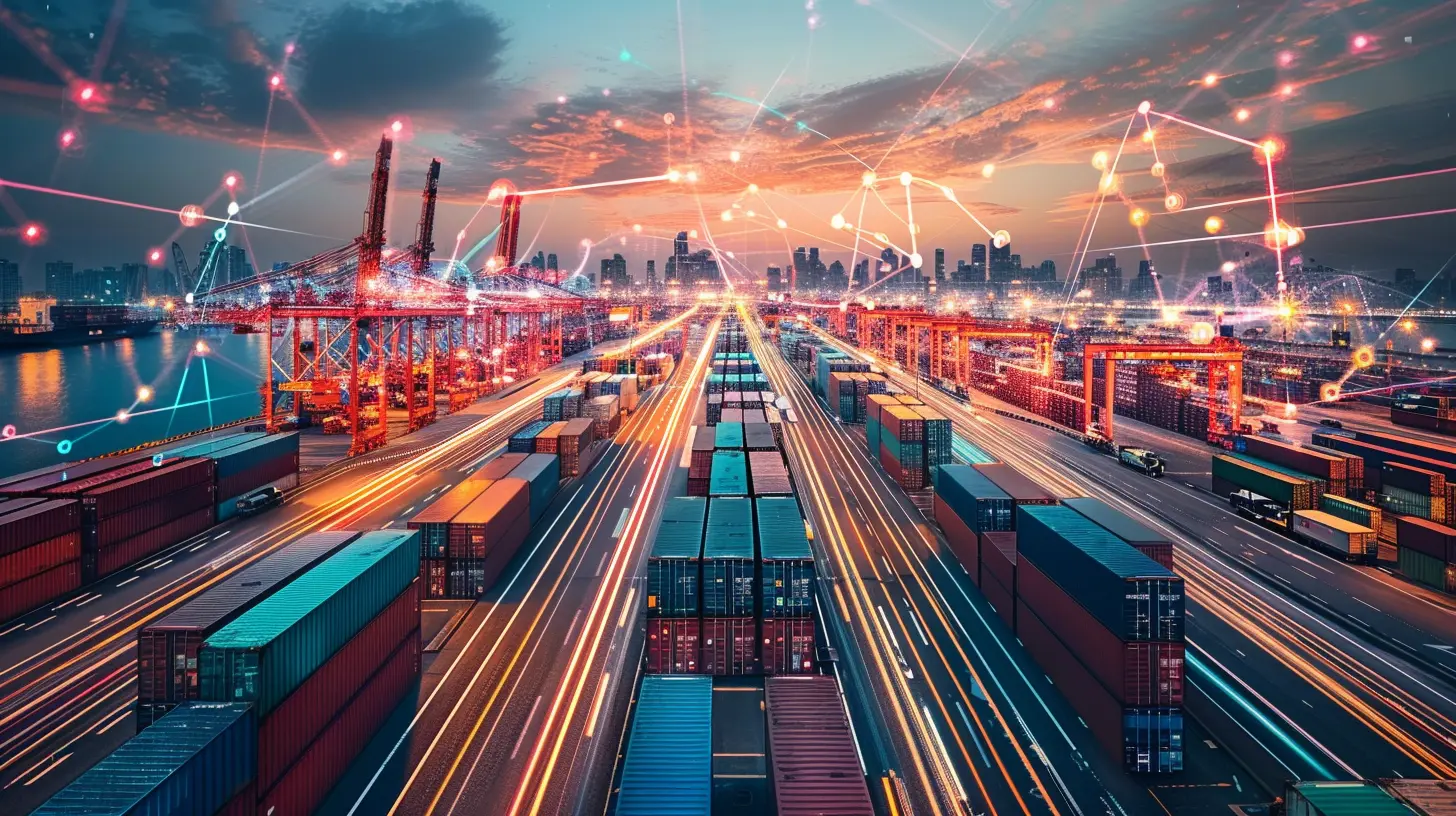The Role of Big Data in Streamlining Supply Chain Processes
5 August 2025
Ever feel like the supply chain is nothing but a chaotic game of dominoes? One wrong move, and boom—everything comes crashing down. Well, that's where big data steps in like a superhero with a cape (or, more accurately, a spreadsheet). It’s transforming the entire supply chain world, making it leaner, meaner, and way more efficient.
But how exactly does this work? Grab your coffee because we’re about to dive deep into how big data is turning supply chains from unpredictable messes into well-oiled machines. 
What Is Big Data and Why Should You Care?
Before we get into the nitty-gritty, let's answer the big question: What even is big data? In simple terms, it refers to massive amounts of structured and unstructured information collected from various sources—think transactions, sensors, GPS trackers, and even social media chatter.Now, why should you care? Because this data isn’t just sitting there collecting digital dust. Companies can analyze it to make informed decisions, minimize guesswork, and ultimately save a ton of time and money. 
How Big Data Transforms Supply Chain Management
1. Real-Time Tracking & Visibility: No More Guessing Games
Remember the old days when tracking shipments felt like throwing a message in a bottle and hoping it reached its destination? Not anymore. Big data allows companies to track every single movement in real-time.- GPS and IoT sensors feed live updates.
- AI analyzes routes to predict potential delays.
- Managers can pivot instantly instead of reacting too late.
The result? No more misplaced shipments or surprise delays. Everyone from warehouse teams to customers gets full transparency on where their stuff is.
2. Demand Forecasting: Predicting the Future (Almost)
Imagine knowing exactly what your customers want—before they even ask for it. Big data makes this possible by analyzing:- Historical sales trends
- Seasonal fluctuations
- Social media sentiment
- Market conditions
Retail giants like Walmart and Amazon use this to stock the right products at the right time, reducing the risk of excess inventory or stock shortages. It’s like having a crystal ball, but way more accurate.
3. Inventory Management: No More Overstuffed Warehouses
Let’s be honest—overstocking is a nightmare. Too much inventory means wasted money, while too little leads to missed sales. Big data optimizes inventory by:- Automatically adjusting stock levels based on demand patterns.
- Identifying slow-moving products to prevent over-purchasing.
- Helping warehouses plan space more efficiently.
This ensures just the right amount of inventory is stocked, saving businesses from unnecessary costs and headaches.
4. Supplier & Vendor Optimization: Finding the Perfect Partner
Not all suppliers are created equal. Some are reliable, some are…well, let’s just say "consistently late." Big data helps businesses assess supplier performance based on key factors like:- Delivery times
- Product quality
- Pricing consistency
- Reliability scores
By analyzing this data, companies can cut ties with unreliable vendors and work only with those who truly deliver (pun intended).
5. Risk Management: Dodging Disasters Before They Strike
Supply chains are filled with potential disasters—weather disruptions, factory shutdowns, or even geopolitical issues. Big data helps companies identify risks before they turn into full-blown crises by:- Monitoring weather patterns for potential shipping delays.
- Tracking global news for unrest affecting production.
- Detecting cybersecurity threats that could disrupt operations.
With early warnings, companies can take proactive measures rather than scrambling for last-minute fixes.
6. Enhancing Customer Satisfaction: Because Happy Customers = More Sales
Nobody likes waiting forever for their order or getting inaccurate tracking info. Big data improves customer experience by:- Providing real-time delivery updates.
- Ensuring faster shipping through optimized routes.
- Offering personalized recommendations based on past purchases.
Happy customers are repeat customers, and that’s a win-win for everyone. 
Challenges of Implementing Big Data in Supply Chains
Now, I know what you’re thinking—this all sounds amazing, so why isn’t every company using big data flawlessly? Well, like any tech marvel, there are a few hurdles:1. Data Overload – Having too much information without proper tools to analyze it can lead to decision paralysis.
2. Integration Issues – Many companies still use outdated systems that struggle to integrate with modern data platforms.
3. Security Risks – With vast amounts of sensitive data, cybersecurity concerns are a big deal.
4. High Implementation Costs – Advanced data analytics require significant investment in software, infrastructure, and skilled personnel.
But here’s the thing—while these challenges exist, companies that successfully implement big data reap enormous benefits. It’s all about taking smart steps toward integration. 
The Future of Big Data in Supply Chains
So, where is all this heading? The future looks even more promising.- AI-Powered Decision Making – Machine learning algorithms will make supply chains even smarter, identifying patterns humans might miss.
- Blockchain Integration – Enhancing transparency and trust by ensuring tamper-proof transaction records.
- Fully Automated Warehouses – AI-driven robots managing inventory, reducing human error, and increasing efficiency.
- Sustainability Tracking – Companies using big data to minimize waste and reduce carbon footprints.
Basically, big data isn’t just a trend—it’s the future. Any company not embracing it risks falling behind the competition.
Final Thoughts
Big data is the secret weapon that turns chaotic supply chains into streamlined, efficient powerhouses. From real-time tracking to predictive analytics, it’s transforming the way businesses operate and giving them a major competitive edge.Yes, there are challenges, but the benefits far outweigh them. Companies that leverage big data will not only survive but thrive in an increasingly complex global market.
So, is your business riding the big data wave yet? If not, it might be time to start. The future of supply chains is here, and it’s powered by data.
all images in this post were generated using AI tools
Category:
Supply Chain ManagementAuthor:

Caden Robinson
Discussion
rate this article
1 comments
Felicity Gates
Absolutely loved this article! It's exciting to see how big data revolutionizes supply chains, making them more efficient and responsive. Can't wait to see what innovations come next—great insights! Keep it up!
August 13, 2025 at 11:07 AM

Caden Robinson
Thank you for your kind words! I'm glad you enjoyed the article and share the excitement about the future of big data in supply chains!


